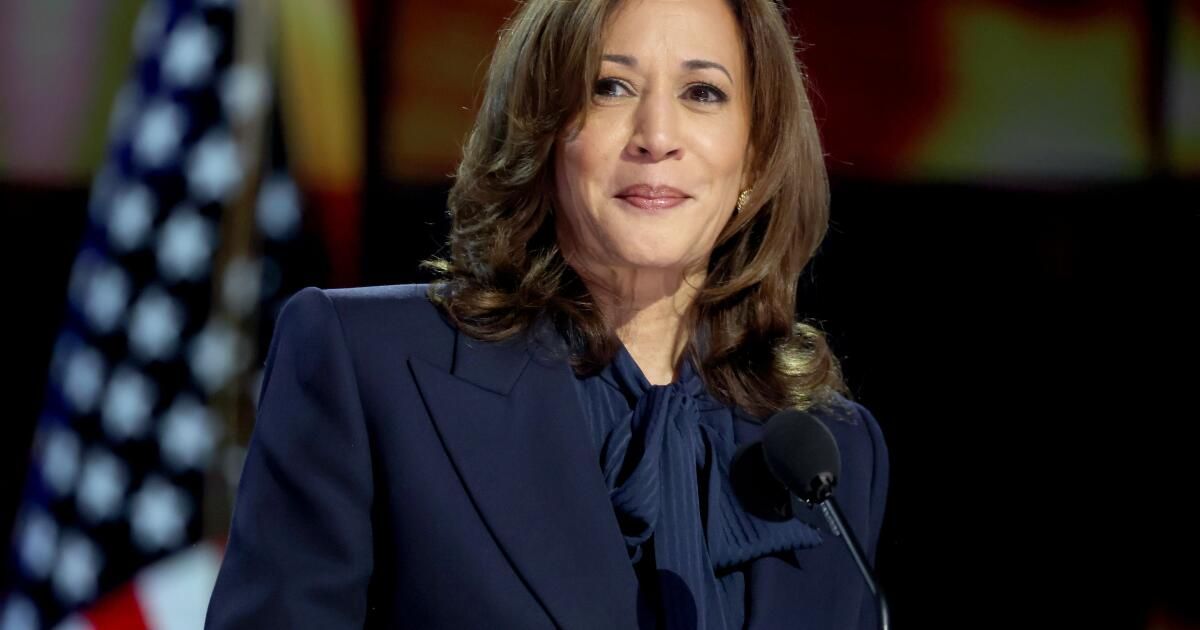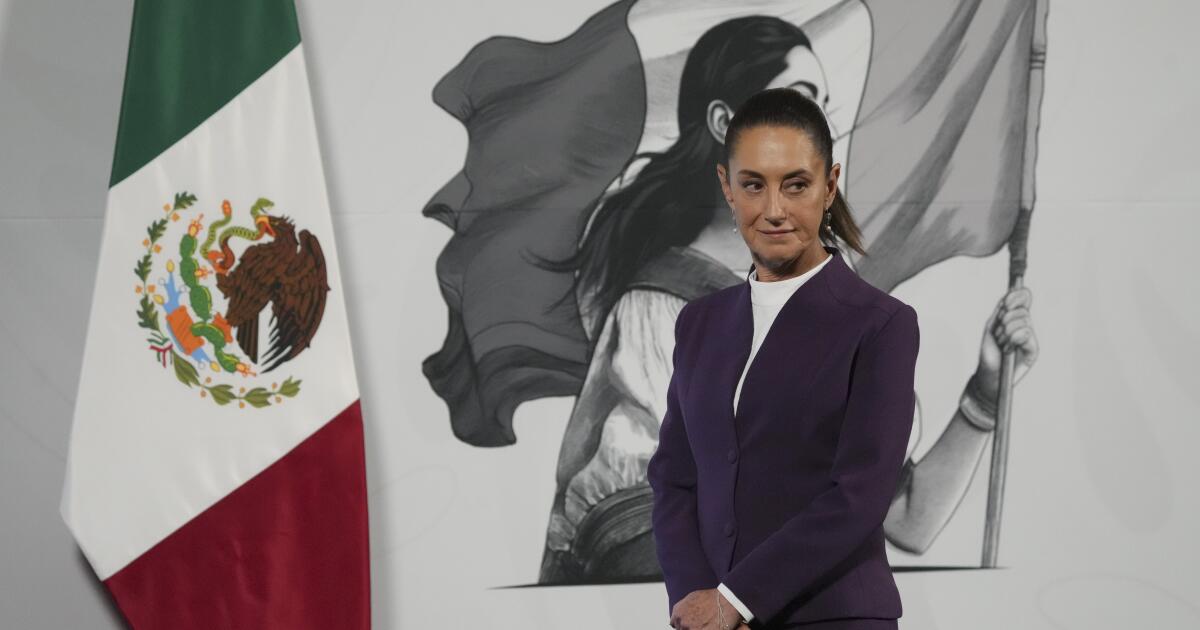Former President Clinton had a hard time remembering the year of his first Democratic convention (1972 or 1976), but wondered how many more he would attend.
“All these young leaders coming after me,” he said in a wistful prime-time address Wednesday night. “They look better. They sound better. And they will be exciting.”
This week’s Democratic National Convention focused on the generational shift of a party whose leaders are in their 70s and 80s, including an 81-year-old president who was ousted from the race last month by an 84-year-old former House speaker. Beyoncé’s music, social media influencer posts featuring coconuts and the convention’s roster of new speakers all contributed to the fresh, upbeat tone.
But in other ways, it seemed like a return to the Clinton era, with big, bold ideas of structural change that have energized the party in recent years replaced by incremental appeals to middle-class anxiety.
There was no Green New Deal, no Medicare for All, no comprehensive vision of immigration reform that motivated Democrats in recent years. Calls to expand or restructure the Supreme Court were kept at bay.
Instead, Democrats, when they did talk policy, talked about giving stipends to first-time homebuyers, expanding child tax credits, protecting the Affordable Care Act, passing a bipartisan border security bill that was rejected by former President Trump and adding more price caps on prescription drugs — a project begun under President Biden. The most prominent item on the agenda, national abortion rights, may be the least likely to pass in a Congress where neither party is expected to have a wide margin.
Vice President Kamala Harris closed Thursday night with a promise to be “a president who leads and listens, who is realistic, practical and has common sense.”
It's not exactly a risky bet.
The spending plans are more liberal than under Clinton, reflecting the country's lesser concern about budget deficits and greater skepticism toward corporations. But the combination of centrist, aspirational rhetoric with tabletop economics sounds as familiar as the music at Clinton's Fleetwood Mac concerts.
The real glue that binds the party together and inspires the most passion today has existed for almost a decade: a deep hatred of Trump.
“Ever since Donald Trump came down that ridiculous escalator, we as a nation have felt trapped,” Maryland Senate candidate Angela Alsobrooks said Wednesday night. “Every national decision has been made in reaction to this man and his extremist MAGA movement.”
Speakers used giant objects to trash his ideas, activists wore T-shirts highlighting his crimes, and Republicans who denounced the former president received as much applause as the progressive heroes.
“I want to be clear to my Republican friends watching at home: If you’re voting for Kamala Harris in 2024, you’re not a Democrat. You’re a patriot,” Geoff Duncan, Georgia’s former Republican lieutenant governor, said during prime time Wednesday, drawing loud cheers of “USA” from the stadium packed with Democrats.
The applause was a result of the party’s efforts to reclaim the rhetoric of patriotism, presenting its mix of economic and reproductive rights promises as a “freedom” agenda.
“We have a golden rule: Mind your own business,” said Minnesota Gov. Tim Walz, Harris’s running mate, adopting former President Reagan’s libertarian language, if not his stance, on abortion rights.
The elixir of abortion access laced with jokes about “weird” opposition has proven potent, helping Harris pull even with Trump in the polls after Biden dropped out of the race.
Sherrie Travis, a 77-year-old retired attorney and Chicago resident, was so fearful of a second Trump term in 2020 that she volunteered to watch the polls in nearby Milwaukee. Her anxiety returned when Biden began campaigning for a second term.
“But since Harris came, the atmosphere is very different,” said Travis, who carried a tote bag with the legend “Cat ladies for Kamala” as he left the convention center. “It really warms my heart to see so many young people who are very committed and working hard.”
The desire to win has helped the party paper over ideological differences that consumed previous conventions and flummoxed Harris when she ran for president four years ago. Times were decidedly different in the 2020 primary season, with more than two dozen candidates touting plans on health care, taxes, judicial reform, immigration and policing, each trying to capture slices of moderate voters or progressive activists who were often at odds with one another.
Harris, whose ideology was never clear, seemed to change her positions to win them over, but ended up appearing unsure of herself.
That damaged Harris’s reputation, leading many party leaders to call for an open process to select a nominee once Biden dropped out last month. But Harris moved quickly to demonstrate her strength once Biden endorsed her, making a rapid round of calls to consolidate support from party grandees.
New York Democratic Rep. Alexandria Ocasio-Cortez, the face of the young progressives, gave Harris a glowing endorsement during her convention speech, in which she recounted her own struggles to pay her bills and obtain health coverage when she worked as a waitress.
He did not mention his harsh criticism of comments Harris made three years ago telling migrants in Guatemala to go home. Nor did he criticize her for the war between Israel and Hamas that sparked thousands of protesters outside the United Center angry at the Biden administration’s support for Israel. Instead, he praised Harris for working on a ceasefire.
“I’m here tonight because America has a unique and precious opportunity in Kamala Harris,” he said Monday. “We have the opportunity to elect a president who is middle class, because she is middle class.”
Faiz Shakir, a senior adviser to Sen. Bernie Sanders (I-Vt.), credits Biden with building a consensus on the direction of the party, taking it as far left as he could to balance out rival factions. Harris is the beneficiary.
“It’s just the presentation and the way he’s going to say it,” he said. “It’s new. It’s fresh.”
But the party has changed in the Trump years. It is now more educated, more female-oriented and more dependent on winning large margins among young people and people of color, some of whom have been rallying behind Trump or threatening to stay home. The pressure to hold it together could become even tougher once Trump leaves the scene.
The seeds of ideological division were visible even during the convention, with protests and when former American Express Chief Executive Kenneth Chennault appeared to challenge the party’s populist wing in a speech in which he praised Harris for understanding that it is “necessary for a president to be both pro-business and pro-worker.”
The array of competing interests was evident inside the convention center’s DemPalooza expo, where booths promoting voting rights, gun control and infrastructure investment sat alongside Catholic Democrats and atheists and humanists in elected office, while a youth climate group funded by California billionaire Tom Steyer helped people create friendship bracelets and a pair of pioneering transgender lawmakers held court on gray couches in “The Power Lounge.”
Roslyn Bacon, a retired teacher who traveled to the convention from Memphis, said outside the convention hall that she hopes her fellow activists will work out their differences later, after Trump is defeated.
“You know, there’s a saying: There are no permanent friends, no permanent enemies, permanent interests. Right now, we all have the same interest,” said Bacon, wearing a Harris T-shirt and a white pearl ensemble in homage to the candidate. “When the dust settles, it’s OK for people to go back to their respective corners and, metaphorically, fight.”












